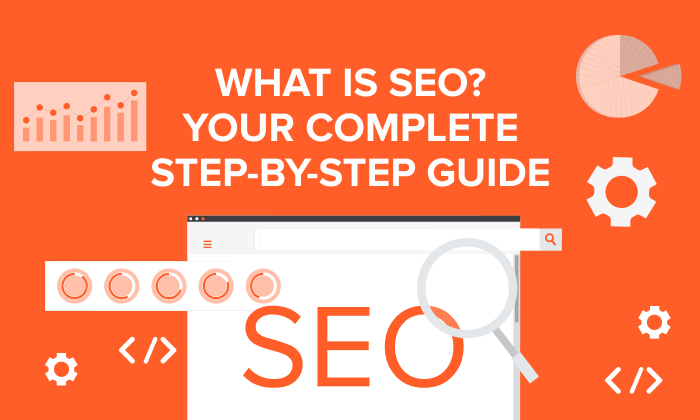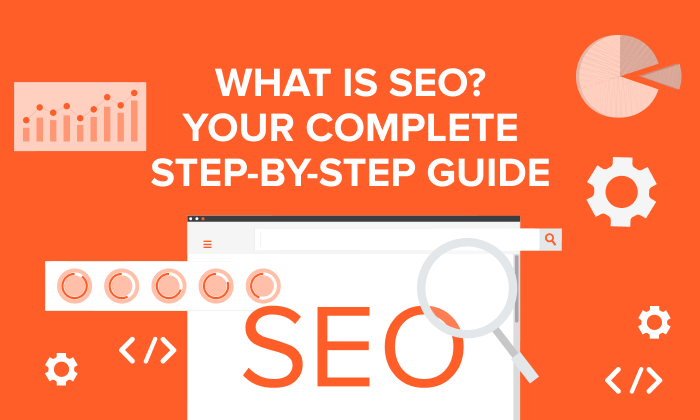Looking to boost your local SEO rankings? Look no further! In this comprehensive 10-step plan, we will guide you through the process of optimizing your local site to improve your search engine rankings. From understanding the top factors impacting your local search rankings to optimizing your Google My Business profile and creating hyper-targeted, locally optimized content, we’ve got you covered. So, if you’re tired of struggling to rank locally and want to skyrocket your local search rankings, this exhaustive plan is exactly what you need. Get ready to increase your local SEO and drive more traffic to your business!
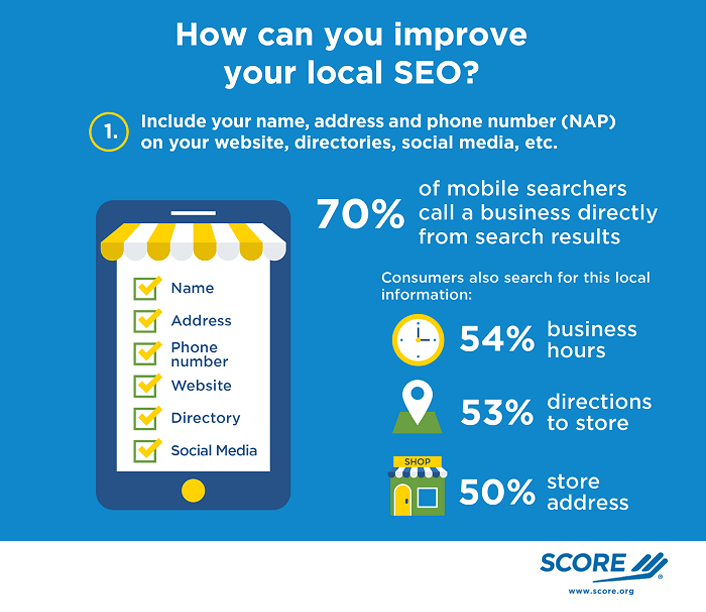
Local Site Optimization: Exhaustive 10-Step Plan to Optimize for Local SEO
Welcome to our comprehensive article on local site optimization! In this guide, we will walk you through a 10-step plan to optimize your website for local SEO. By implementing these strategies, you can enhance your online presence and increase your visibility in local search results. So let’s dive in and explore each step in detail.
Understanding Local SEO
What is Local SEO?
Local SEO refers to the practice of optimizing your website and online presence to attract more customers from your local area. It involves targeting specific keywords, optimizing your website’s content and structure, and ensuring that your business information is accurate and consistent across various online platforms.
Why is Local SEO Important?
Local SEO is vital for businesses that depend on local customers. When people search for products or services in their area, they are more likely to visit or contact businesses that appear in the top search results. By optimizing for local SEO, you can increase your chances of being found by potential customers and drive more targeted traffic to your website.
Benefits of Local SEO
Optimizing your website for local SEO offers several benefits. Firstly, it helps your website rank higher in local search results, making it more visible to potential customers. This increased visibility can lead to higher organic traffic and more qualified leads. Additionally, local SEO can improve your online reputation, as positive reviews and ratings can influence consumer decisions. By optimizing for local SEO, you can build and maintain a strong online presence in your local market.
Keyword Research
Identifying Local Keywords
The first step in optimizing your website for local SEO is conducting thorough keyword research. Identify keywords that are relevant to your business and have a local focus. Use specific keywords that include your location or target local neighborhoods to attract the right audience.
Using Keyword Research Tools
To streamline your keyword research process, utilize keyword research tools. These tools provide valuable insights into search volume, competition, and other metrics. Some popular keyword research tools include Google Keyword Planner, SEMrush, and Moz Keyword Explorer.
Competitor Analysis
Analyzing your competitors’ keywords can provide valuable insights and help you identify gaps in your own strategy. Look at the keywords your competitors are targeting and find opportunities to differentiate yourself. Tools like SEMrush and Ahrefs can assist in competitor analysis.
On-Page Optimization
Optimizing Title Tags
Title tags are an essential on-page optimization element for local SEO. Ensure that each page on your website has a unique and descriptive title tag. Include relevant keywords and your location to improve your visibility in local search results.
Improving Meta Descriptions
Meta descriptions provide a brief summary of your webpage in search engine results. Optimize your meta descriptions by including your target keywords and a compelling call-to-action to entice users to click through to your website.
Optimizing Heading Tags
Heading tags, such as H1, H2, and H3, are important for both SEO and user experience. Use heading tags to structure your content and highlight important information. Incorporate your target keywords into heading tags to signal relevance to search engines.
Optimizing URL Structures
URL structure plays a role in both user experience and SEO. Create clean and descriptive URLs that include your target keywords and make it easy for users and search engines to understand the content of your pages.
Internal Linking
Internal linking is the practice of linking to other pages within your website. It helps search engines understand the structure and hierarchy of your website and improves the user experience. Include relevant internal links throughout your content to guide visitors to other valuable pages on your site.
Optimizing Images
Optimize your images for local SEO by using descriptive file names and alt tags. Include your target keywords and location in the alt tags to make your images more discoverable in local searches.
Creating High-Quality Content
High-quality content is crucial for local SEO success. Create informative and engaging content that addresses the needs and interests of your local audience. Incorporate relevant keywords naturally and focus on providing value to your readers.
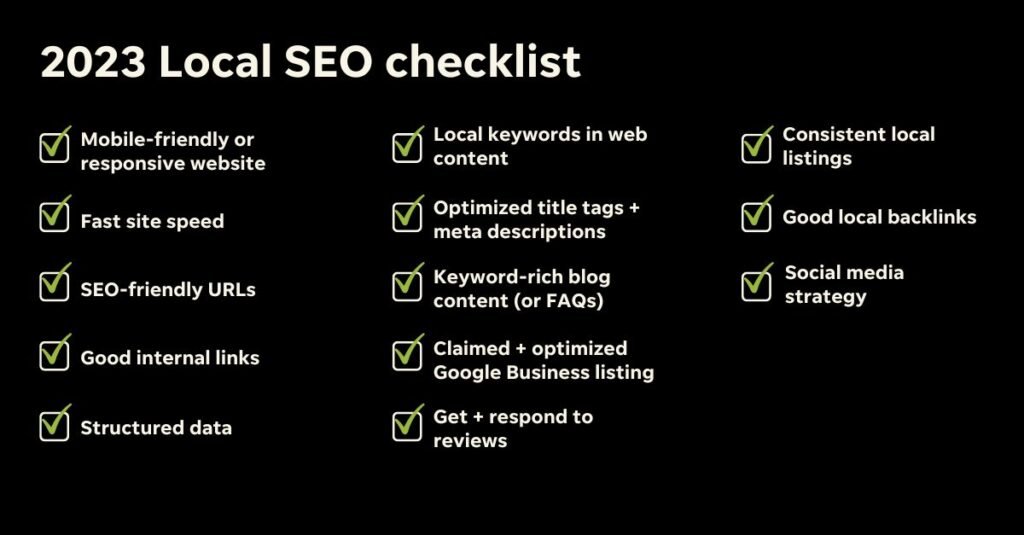
Local Business Listings
Creating Google My Business Listing
Creating a Google My Business (GMB) listing is essential for local SEO. It allows you to manage your business information on Google, including your address, phone number, and hours of operation. Ensure that all information is accurate and up to date to enhance your local visibility.
Optimizing Business Listings on Other Platforms
In addition to GMB, optimize your business listings on other platforms, such as Bing Places for Business, Yelp, and Apple Maps. Provide consistent and accurate information across all platforms to improve your local SEO efforts.
Citation Building
Understanding Citations
Citations are mentions of your business information on other websites, such as directories, review sites, and social media platforms. They play a significant role in local SEO by establishing the credibility and authority of your business. Citations typically include your business name, address, phone number, and website URL.
Identifying Citation Sources
Identify reputable citation sources that are relevant to your industry and location. These may include local directories, industry-specific websites, and chamber of commerce websites. Conduct research and reach out to these sources to ensure that your business information is listed accurately.
Building Consistent Citations
Consistency is key when building citations. Ensure that your business information is consistent across all citation sources. Use the same formatting, abbreviations, and phone number variations to avoid confusion and enhance the accuracy of your listings.
Managing Existing Citations
Regularly monitor and manage your existing citations to ensure accuracy and consistency. Update any outdated information and address any inaccuracies promptly. Tools like Moz Local and BrightLocal can help you manage and track your citations effectively.
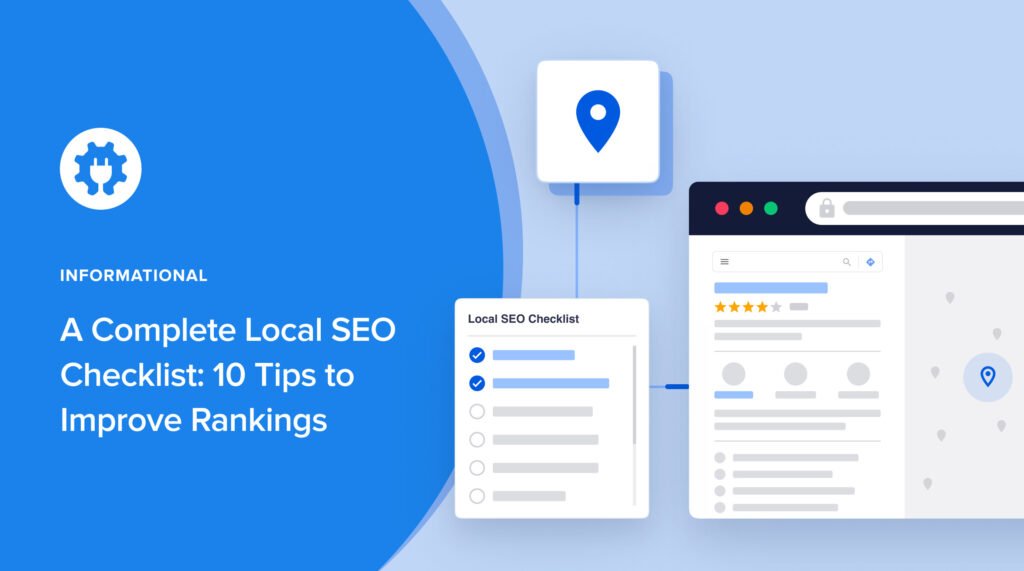
Local Link Building
Building Relationships with Local Influencers
Building relationships with local influencers can help you earn valuable backlinks and increase your local visibility. Reach out to influential bloggers, local organizations, and industry leaders in your area. Collaborate on content, sponsor events, or offer partnerships to build strong relationships and gain relevant backlinks.
Guest Blogging on Local Websites
Guest blogging is a powerful link building strategy. Identify local websites or blogs that accept guest posts and offer to contribute high-quality content that aligns with their audience. Include relevant links back to your website to drive traffic and improve your local SEO.
Participating in Local Events and Sponsorships
Participating in local events and sponsorships not only boosts your brand visibility but also provides opportunities for local link building. Get involved in community events, sponsor local sports teams or charities, and earn backlinks from event websites or partner organizations.
Reviews and Ratings
Importance of Reviews for Local SEO
Reviews and ratings are crucial for local SEO success. Positive reviews can boost your credibility, attract more customers, and improve your local rankings. Search engines take into account the quantity and quality of reviews when ranking local businesses.
Encouraging Customers to Leave Reviews
Encourage your satisfied customers to leave reviews by providing excellent service and requesting feedback. Ask for reviews in person, on your website, and through follow-up emails. Make it easy for customers to leave reviews by providing clear instructions and links to review platforms.
Responding to Reviews
Responding to reviews, both positive and negative, shows that you value customer feedback and are committed to providing great service. Respond promptly and professionally to all reviews to engage with your customers and demonstrate your dedication to customer satisfaction.

Mobile Optimization
Mobile-Friendly Website Design
Mobile optimization is crucial for local SEO, as an increasing number of people use mobile devices to search for local businesses. Ensure that your website is mobile-friendly, with responsive design and fast load times. Optimize your content and images for mobile viewing to provide a seamless user experience.
Optimizing Page Speed
Page speed is a critical factor for both user experience and SEO. Optimize your website’s performance by minimizing file sizes, enabling browser caching, and compressing images. Regularly monitor your website’s speed using tools like Google PageSpeed Insights and make necessary optimizations.
Implementing Responsive Design
Responsive design ensures that your website adjusts and adapts to different screen sizes and devices. This is crucial for mobile optimization and provides a consistent and user-friendly experience across all devices. Implement responsive design techniques to improve your local SEO efforts.
Local Analytics and Reporting
Setting Up Local Analytics Tracking
Tracking and analyzing local SEO performance is essential to measure the effectiveness of your strategies. Set up local analytics tracking using tools like Google Analytics and Google Search Console. Monitor key metrics such as organic traffic, keyword rankings, and conversion rates to gain insights and make data-driven decisions.
Analyzing Local SEO Performance
Regularly analyze your local SEO performance to identify areas for improvement. Track your keyword rankings, local search visibility, and website traffic. Compare your performance to your competitors and adjust your strategies accordingly.
Making Data-Driven Decisions
Data-driven decision-making is crucial for optimizing your local SEO efforts. Use the insights gathered from analytics tools to make informed decisions about keyword targeting, content creation, and link building. Continuously monitor and adjust your strategies based on the data to improve your local rankings.
Congratulations! You have reached the end of our comprehensive article on local site optimization. By following this 10-step plan, you can effectively optimize your website for local SEO and improve your online visibility in your local market. Remember to continuously monitor and adapt your strategies to stay ahead in the ever-changing landscape of local search. Good luck!
